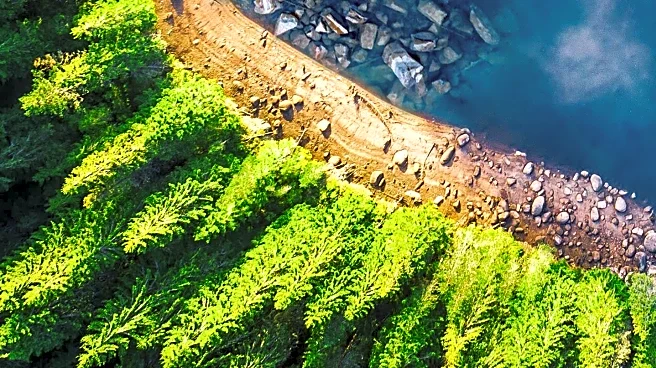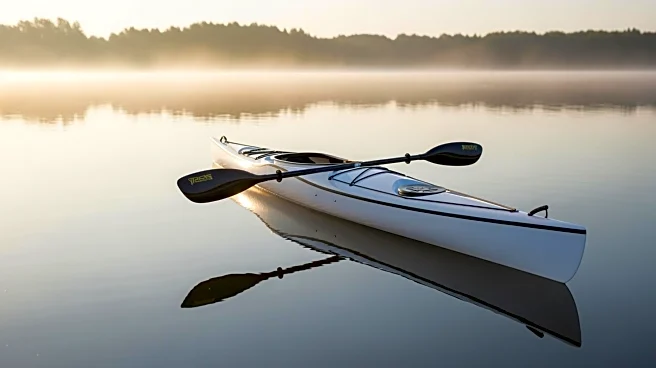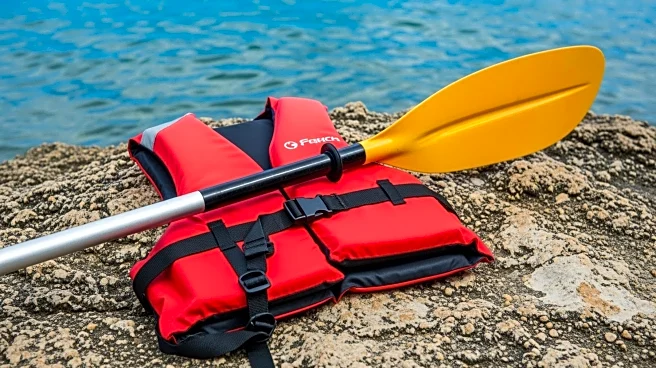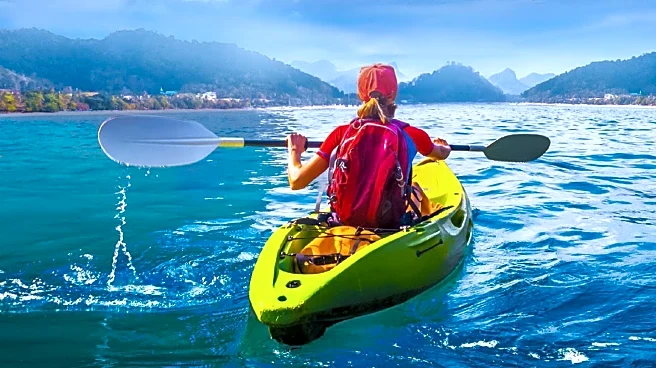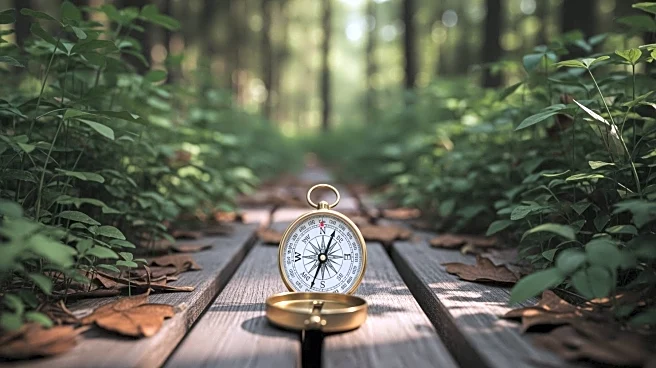What's Happening?
Flatwater kayaking offers the freedom to explore various bodies of water, and mastering basic paddling strokes is crucial for efficient navigation. Key techniques include the forward stroke for propulsion,
the reverse stroke for slowing down and backing up, the sweep stroke for turning, and the draw stroke for moving sideways. Proper paddle grip and technique are essential to prevent fatigue and ensure effective control of the kayak. Practicing these strokes in a calm environment is recommended, and learning from experienced guides can enhance skill development.
Why It's Important?
Understanding and mastering kayak paddling techniques is vital for safety and efficiency in water navigation. Proper technique reduces the risk of injury and fatigue, allowing kayakers to enjoy longer and more challenging excursions. It also enhances the ability to maneuver in various water conditions, contributing to a safer and more enjoyable experience. As kayaking gains popularity, knowledge of these techniques supports the growth of instructional programs and guides, fostering a community of skilled and responsible paddlers.
What's Next?
As interest in kayaking continues to rise, there may be increased demand for instructional courses and workshops focusing on paddling techniques. This could lead to the development of certification programs for kayaking instructors, ensuring standardized training and safety practices. Additionally, advancements in paddle design and technology may emerge, offering improved ergonomics and efficiency for paddlers. The growth of kayaking communities may also encourage the organization of events and competitions, promoting skill development and camaraderie among enthusiasts.
Beyond the Headlines
The emphasis on paddling techniques highlights the importance of skill development in outdoor sports, encouraging a culture of safety and responsibility. It also underscores the role of education in promoting sustainable practices, as skilled paddlers are more likely to respect and preserve natural environments. The focus on technique may inspire broader discussions on the value of outdoor education and its impact on personal growth and environmental stewardship.
